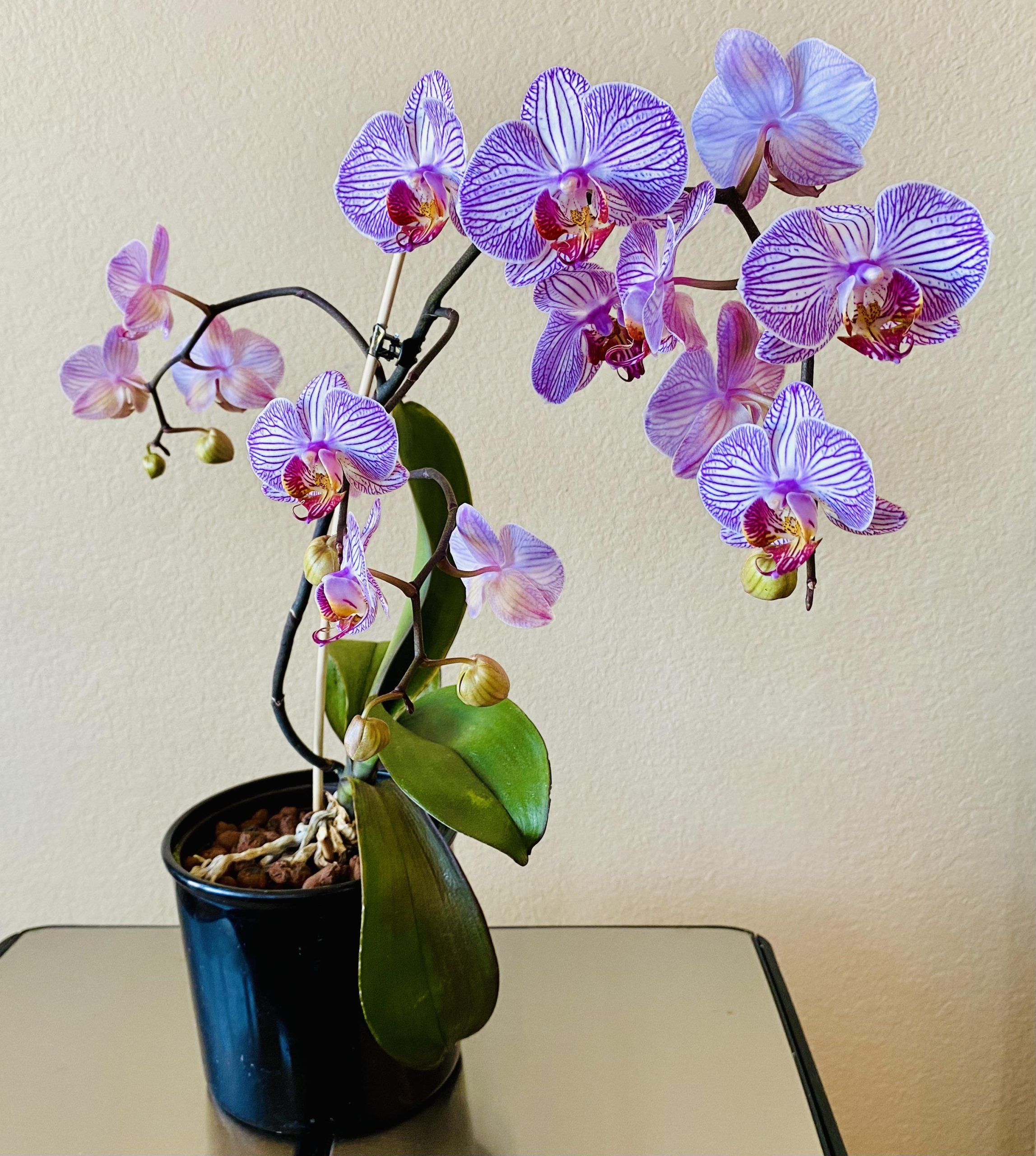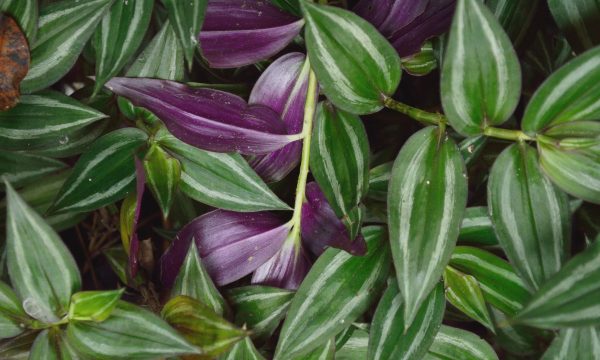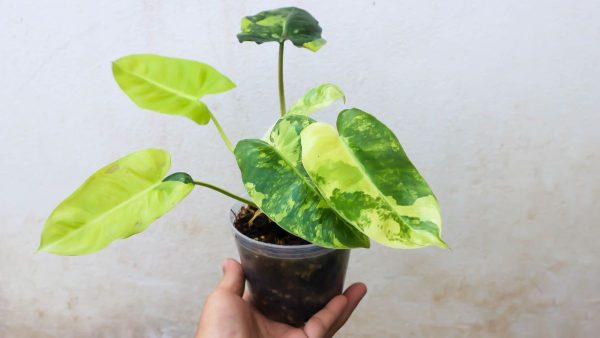In this article, you’ll learn 2 easy ways to grow orchids and how to take care of them so that you can get beautiful flowers.
Let’s get into it!
How to Grow Orchids At Home?
First I will explain every method of growing Orchids at home and easily and if you follow these instructions you will achieve a new Orchid.

Then I will give you a list of items you will need for each method then a step-by-step procedure, and at the end of every method you will find a video tutorial.
1. Growing from Seeds
Growing orchids from seeds can be a challenging yet rewarding process.
Unlike most plants, orchid seeds lack stored nutrients, requiring a special fungus to provide the necessary food for germination.
This symbiotic relationship is important for the success of your orchid seeds.
There are two main ways to germinate the Orchid seeds.
1. Symbiotic
Orchid seeds are tiny and unlike most seeds, they don’t have their food to help them grow.
That’s where they need to attach with fungus to get their nutrients for germination.
In the symbiotic germination, the orchid seeds team up with Mycorrhizal fungi in the soil.
The fungus provides the seeds with the necessary nutrients to start growing, kind of like a baby plant’s first meal.
In return, as the orchid plant grows, it gives back to the fungus, sharing some of the food it makes from photosynthesis.
This teamwork between the orchid and the fungus is not just helpful; but also essential.
Without this partnership, the orchid seeds wouldn’t be able to sprout and grow into the beautiful flowers we admire.
2. Asymbiotic (Flasking)
The symbiotic (flasking) germination method for orchid seeds is like growing plants in a tiny indoor garden.
Here, we skip nature’s way of doing things. Normally, orchid seeds need a fungus in the soil to kickstart their growth and this is symbiotic germination.
But in a symbiotic germination, we do things differently.
We place the seeds in a flask containing a special jelly-like substance packed with nutrients, giving them everything they need to sprout without the help of fungi.
Things You Need for Orchid
Here’s the list of items that you will need to germinate the Orchid seed at home:
- Distilled Water
- Cooking Pot
- 80% Alcohol
- Unripe Orchid Seed pod
- Bleach for sterilization
- Designated room
- Beaker to sow your seeds
- Scalpel
- Tweezer
- Cleaning spray
- Orchid fertilizer
- Eyedropper
Step By Step Method for Seeds Germination
Germinating orchid seeds can seem like a challenge, but with the right steps, it’s also easy to do at home.
Cleaning is the most important key throughout the process so don’t forget them.
Make sure everything you’re using workspace, tools, and even your hands is super clean to avoid any fungus or bacteria messing with the seeds.
Step 1:
Get your growing medium ready. For orchids, this isn’t your regular soil.
You’ll need a special orchid germination mix, which you can get online or from a specialty store.
Sterilize it before use by baking or using a microwave, following the instructions on the package.
Step 2:
Next, you’ve got to sterilize your seeds.
Mix them in a solution of 10% bleach and 90% distilled water for about 10 to 15 minutes.
This step gets rid of any unwanted guests on the seeds’ surface.
Step 3:
Rinse the seeds. After sterilizing, thoroughly rinse them with sterile water to remove any bleach residue.
Step 4:
Time to sow the seeds. Carefully spread them over the surface of your prepared growing medium.
Don’t bury them. Orchid seeds need light to germinate, so just leave them on the surface.
Step 5:
Seal the container. Whether it’s a Petri dish, jar, or another type of container, sealing it is most important.
It keeps the humidity high and the germs out.
Step 6:
Find the perfect spot. Orchid seeds thrive in warm places with lots of indirect light.
Think of a cozy spot next to a window, but not in direct sunlight.
If you couldn’t understand how to prepare the medium and how to sterilize the seeds then here’s a video tutorial that will guide you in detail.
2. Growing from Cuttings
Growing your own Orchid from cuttings is also a bit challenging but yet you can do this easily with the right knowledge at home.
Mainly there are three types of propagation of Orchid from cuttings.
1. Stem Cuttings
This method is suitable for sympodial orchids, like Cymbidiums, where a piece of the stem with one or more nodes is cut and planted in moist media.
Each node has the potential to grow into a new plant.
2. Keiki Cuttings
Some orchids, particularly Phalaenopsis, produce keikis (baby plants) along their flower spike or stem, which can be removed and potted independently once they’ve developed roots and a few leaves.
3. Back Bulb Cuttings
Used for orchids with pseudobulbs, this method involves separating old, leafless pseudobulbs from the main plant and potting them in a moist medium.
With proper care, these back bulbs can eventually produce new shoots.
Now let’s take a look at every single method with detailed steps on how you can do this at your home to get this premium baby plant.
1. Stem Cuttings
Stem cutting for propagation is a popular and effective method for reproducing orchid plants at home.
This technique involves cutting a healthy section of the stem from a mature orchid and placing it in a suitable medium to encourage new growth.
The cut section of the stem, containing one or more nodes, is treated and nurtured under specific conditions of moisture and light.
You will need the following things to do the stem cuttings propagation:
- Sharp, sterile pruning shears or a knife
- Rooting hormone powder or gel
- A clean, small pot
- Orchid potting mix/ sphagnum moss
- Plastic bag or clear plastic dome to create humidity
- A spray bottle for misting
- Labels for identification
- A warm, indirect light source
Here is a step-by-step method to do the stem-cutting propagation of your Orchid plant.
- Find a healthy orchid: Look for a plant with vibrant leaves and stems. This means it’s healthy and can handle being cut for propagation.
- Choose the right stem: Pick a green stem, not flowering, and has several nodes (small bumps on the stem). These nodes are where new growth will sprout.
- Get your tools ready: You’ll need a sharp, clean knife or scissors, a small pot, an orchid potting mix, and some rooting hormone powder. Make sure your tools are clean because it will help to prevent disease.
- Cut: Carefully cut the stem about an inch below a node. Aim for a piece of stem about 4 to 6 inches long with at least two or three nodes.
- Apply rooting hormone: Dip the cut end of the stem in the rooting hormone. This helps encourage new roots to grow.
- Plant the stem cutting: Fill your pot with orchid potting mix and make a small hole in the center. Place the stem cutting in the hole, ensuring at least one node is buried in the mix.
- Water and wait: Spray the water on a potting mix lightly, just enough to dampen it. Place the pot in a warm, bright spot, but out of direct sunlight which can be too harsh. Keep the soil moist but not soggy. In a few weeks, you should see new growth.
- Monitor and care for the cutting: Keep an eye on your stem cutting and make sure the soil stays moist. Once new leaves start to grow, you can carefully transplant the orchid into a larger pot with a regular orchid potting mix. It will take some time for the plant to establish itself, so be patient with it.
2. Keiki Cuttings
Keiki is a Hawaiian word that means “baby” or “child,” which fits perfectly because you’re getting a baby plant from your adult orchid.
This happens when your orchid grows a little offshoot, looking almost like a mini version of the plant.
Things you need for Keiki Cuttings
- A Healthy Orchid Plant
- A Sharp Knife or Scissors
- Cinnamon Powder
- Rooting Hormone
- A Small Pot
- Orchid Potting Mix
- Plastic Bag or Cling Wrap
Here’s the step-by-step method to do keiki cuttings propagation of Orchid:
- First, find a healthy keiki on your orchid. Look for a small plant growing from a node on the flower spike.
- Check that the keiki has at least three roots, about 2-3 inches long. This means it’s ready to live on its own.
- Gather your tools: a clean, sharp blade or scissors, cinnamon powder (a natural fungicide), and a small pot with orchid planting media.
- Carefully cut the keiki away from the mother plant. Make sure to include some stems above and below the keiki.
- Dip the cut ends of the keiki and the mother plant in cinnamon powder to prevent infection.
- Plant the keiki in its new pot filled with moist orchid media, making sure the roots are buried but the rest of the plant is above the surface.
- Place the new plant in a spot with bright, indirect sunlight and keep the humidity high. You might want to use a humidity tray or a plastic bag to create a greenhouse effect.
- Water it sparingly at first to encourage new root growth then adjust to a normal watering routine for orchids.
3. Back Bulb Cuttings
Basically in back bulb cuttings, we use the old, mature parts of an orchid (those bulbs at the base of your plant that don’t have leaves anymore) to start a new plant.
You cut these back bulbs off, plant them in the right soil, and with a bit of care, they start growing into new orchids.
Things you need for Back Bulb Cuttings
- Sharp, clean scissors or a knife
- A small pot or container with drainage holes
- Orchid potting mix, specifically designed for orchids
- A clear plastic bag or a humidity dome
- A rooting hormone (optional, but helps)
- A warm spot with indirect light
Step-by-step method to do back bulb cuttings propagation of your Orchid:
- Select a Healthy Back Bulb: Choose a back bulb from your orchid that still looks healthy but doesn’t have any leaves. This will be your starting point.
- Cut the Bulb: Using a clean, sharp knife or scissors, carefully separate the chosen back bulb from the rest of the plant. Make sure your cutting tool is sterile to avoid infecting the plant.
- Prepare the Bulb: Before planting, allow the cut end of the bulb to dry for a day or so to form a callous. This step helps prevent rot.
- Potting Time: Grab a small pot and fill it with a suitable orchid planting mix. Orchid bark or sphagnum moss works great as they allow for good drainage and airflow.
- Plant the Back Bulb: Place the back bulb in the pot with the cut end buried in the planting mix. Make sure it’s snug but not buried too deep.
- Watering: Water the newly potted back bulb lightly to settle the planting mix around it. Keep the medium slightly moist but never soggy to avoid rot.
- Place in Proper Light: Put your pot in a location where it will receive indirect but bright light. Orchids love light but direct sun can be too harsh.
- Patience is Key: Wait for the magic to happen. It might take several weeks or even months before you see any growth. Just keep the medium slightly moist and maintain the lighting conditions.
- Look Out for New Growth: Once you notice new shoots developing, continue your routine care, adjusting watering and feeding as necessary to support your new orchid’s growth.

